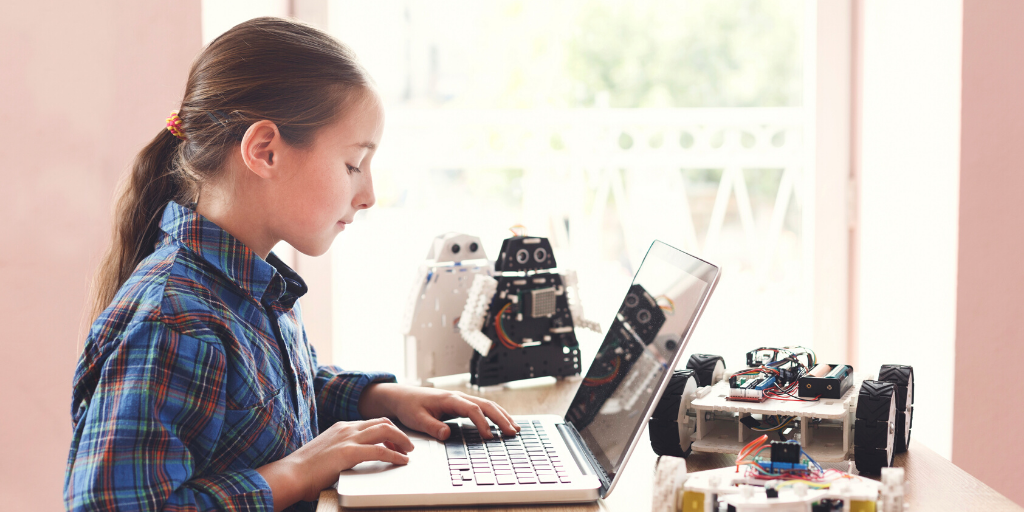AWS Public Sector Blog
Enhancing K12 learning through robotics: AWS EdStart Hot Startups
Robotics and machine learning (ML) aren’t just for the technology industry. Robotics are being used in education to advance student learning through one-to-one support, adaptive learning algorithms, and immediate feedback mechanisms within K12 schools. Robots can use ML algorithms to adapt to student learning styles, teaching children to code through interactive, fun games and supporting core curriculum in classrooms with high student to teacher ratios. These robots can accommodate students from different levels or backgrounds through personalized attention using several learning techniques to help students learn faster.
These four Amazon Web Services (AWS) EdStart Members—NTU, Pai Technology, Hack and Tech Club, and Van Robotics—are using robotics to revolutionize K12 education.
NTU, based out of Sao Paulo, Brazil, provides assistance and support to education systems who are transitioning to a science, technology, engineering, the arts, and mathematics (STEAM)-enhanced curriculum through robotic operating system courses. They use a robotic-tool operation app in a virtual simulation setting, which provides a visualization-based and progressive learning environment. With this app, students have the opportunity to learn the basics of how robots move and work.
“In 2016, we deployed the app on our own physical server, which was used to validate whether the robot simulation service was reliable or not. After we moved to AWS, we could focus on our business strategy and software solution. Then in 2019, after AWS launched AWS RoboMaker, we decided to use the cloud service to efficiently scale robotic simulation environments in seconds. As the solution provides access to a wide variety of robots, this means huge cost savings, even when compared to the cost of purchasing and maintaining a real robot,” said Flavio Yamamoto, founder, NTU.
Pai Technology, based out of Shanghai, China, addresses parental concerns surrounding the presence and influence of technology in the lives of their children. By introducing healthy yet fun ways to experience screen time, Pai Technology creates positive learning experiences in tech and research. Developed to introduce children to the coding language, one of their products, Augie, is an augmented-reality robot that allows childhood and elementary age students to code their own adventures. Augie helps children enhance critical thinking and problem solving skills through imagination and creativity.
“I was looking for a way for visual, auditory, kinesthetic, and tactile learners to learn collectively in the classroom. I found that Augie was able to cater to all learning levels,” Swati Mehta, early childhood teacher at Wolfe Street Academy said. “With Augie, my students have real-life experiences that extend their ability to understand coding.”
Hack and Tech Club, based out of Madrid, Spain, focuses on helping children age 3+ discover the world of programming, robotics, and three-dimensional (3D) printing via gamification. Their goal is to help children develop fine motor skills, logical thinking, and computational skills at an early age. Based on the benefits of using robotics and the need to learn and improve technological skills, Rocio created Hack and Tech. Hack and Tech created toys such as Bee-Bot, Robot True True, and Botley (the coding robot), which combine different teaching disciplines into games that enable childhood development. Bee-Bot teaches students learn to count and add, whereas Robot True True goes a step further, combining techniques, such as collaborative engagement and working on fine motor skills.
“AWS allowed us to have a scalable and fully operational environment quickly, both for the pre-sale part, where we use functional and personalized environments in an agile way, as well as with production systems optimized to maximize the performance of infrastructures and scale environments in a simple and agile way. We use Amazon Virtual Private Cloud (Amazon VPC) with Amazon Elastic Compute Cloud (Amazon EC2) and Amazon Relational Database Service (Amazon RDS) servers for web applications with load balancers and auto-scaling systems. We use AWS Lambda functions to optimize costs, turning off certain services when they are not being used after hours. We use Amazon Elastic File Storage (Amazon EFS), Amazon Elastic Block Service (Amazon EBS), Amazon Simple Storage Service (Amazon S3), and S3 Glacier storage with a full scheduled life cycle backup process.
We completely eliminated local servers, guaranteeing more than 99.99% availability of internal company information with the combination of Amazon EC2, Amazon RDS, and Amazon EFS, all within a VPC with VPN access only for company employees, where we have the necessary services to operate. We have the development servers in the exact environments that the clients have, so the tests we do are carried out directly on the same environments that they will be for production,” said Rocio Carracedo, CEO, Hack and Tech Club.
Van Robotics, based out of the United States, builds artificial intelligence (AI)-enabled, interactive social robot tutors to accelerate learning. According to Van’s CEO and founder Laura Boccanfuso, the idea of interactive, smart robot tutors was a result of a decade of research working with students with wide-ranging abilities, teachers, and interventionists. The outcome was ABii, who employs smart classroom software that is interactive and dynamic, allowing students to focus on developing skills and integrating knowledge. ABii works with elementary school-aged students and delivers standards-aligned math and reading lessons and adapts how she teaches based on multiple measures of performance and attention.
“The AWS platform provides a robust and diverse suite of machine learning tools that has enabled our team to identify the best solutions for our adaptive system. We were able to iteratively evaluate the performance of various algorithms with the same dataset expedited the process of moving new software features from concept to deployment,” said Boccanfuso.
Through these companies—and advances in AI, cloud computing, and robotics—educators and parents are using new and more impactful robotics solutions to help students succeed. Learn more about how our members around the world use AWS on the AWS EdStart website. Stay up-to-date on all AWS EdStart news and events by joining the AWS EdStart newsletter mailing list.
